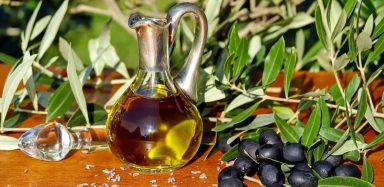Supporting Your Overall Health
Iron is an essential vitamin that plays a critical role in transporting oxygen throughout the body and supporting overall health. Luckily, if you’re low on iron, numerous foods can help boost your iron intake. Medications like Reblozyl (Luspatercept) can be prescribed to treat certain types of anemia.
9 Iron-Rich Foods for Your Diet
1. Red Meat
Red meats like beef, lamb and pork are some of the richest sources of heme iron, which is more easily absorbed by the body than non-heme iron found in plant-based foods. Including red meat in your meals can significantly increase your iron intake, making it one of the best choices for those with anemia.
Related Search Topics (Ads)
2. Tofu
Some people who don’t eat meat can struggle to get the iron they need in their diet. But tofu is an excellent plant-based source of iron. It is also rich in protein, calcium and other important nutrients, making it a staple for vegetarians and vegans. Tofu’s versatility allows it to be used in various dishes, from dinners to smoothies.
3. Spinach and Other Leafy Greens
In addition to being overall great for our health, spinach, kale and Swiss chard are packed with non-heme iron and can help increase iron levels, especially when eaten with foods that are rich in vitamin C. Spinach is a powerhouse of nutrition, rich in non-heme iron (the type of iron found in plant-based foods). One cup of cooked spinach contains about 6.4 mg of iron.
It also provides essential nutrients like vitamin C, which enhances iron absorption. Whether sautéed, added to soups or eaten in salads, spinach is an excellent choice for increasing your iron intake.
4. Lentils
Lentils are an affordable, plant-based source of iron, offering approximately 6.6 mg per cup when cooked. They are also high in fiber, which helps with digestion and promotes heart health. Lentils are a versatile food that can be used in soups, stews, salads or as a side dish to boost iron levels.
5. Dark Chocolate
Dark chocolate is one of the most fun ways to get iron into your diet. A 1-ounce serving of dark chocolate contains around 3.4 mg of iron, making it a tasty way to get more of this essential mineral. Dark chocolate also contains antioxidants and magnesium, providing additional health benefits. Of course–just like with anything in life–make sure to enjoy dark chocolate in moderation.
6. Fortified Cereals
Many breakfast cereals are fortified with iron, making them a convenient way to increase your intake. Some cereals provide up to 18 mg of iron per serving, covering 100% of your daily needs. However, it's important to choose cereals that are low in added sugar, such as Food for Life or Kashi.
7. Pumpkin Seeds
Pumpkin seeds are a nutrient-dense snack that provides around 2.5 mg of iron per ounce. They are also rich in magnesium, zinc and healthy fats, making them a well-rounded addition to your diet. Pumpkin seeds are easy to get into your diet. You can sprinkle them on salads, yogurt or oatmeal for an extra boost of iron, or enjoy them on their own as a snack.
8. Chickpeas
Chickpeas, also known as garbanzo beans, contain approximately 4.7 mg of iron per cooked cup. They are also high in fiber, protein and folate, making them a healthy and filling food choice. Chickpeas can be used in salads, roasted for a crunchy snack or blended into hummus for a delicious dip that boosts your iron intake.
9. Quinoa
Quinoa is a gluten-free grain that contains more iron than most other grains, making it a great addition to an iron-rich diet. It’s also rich in protein, fiber and essential amino acids, providing a balanced nutritional profile for people with anemia. It offers about 2.8 mg of iron per cooked cup. Use quinoa as a base for salads, bowls or side dishes to improve your iron intake.
Reblozyl (Luspatercept) for Anemia
Reblozyl (Luspatercept) is a prescription medication used to treat certain types of anemia (a condition in which there aren't enough healthy red blood cells). It works by helping the body produce more red blood cells, reducing the need for blood transfusions. Reblozyl is primarily used for patients with two specific conditions:
- Beta-thalassemia: A genetic blood disorder where the body has trouble producing hemoglobin, leading to severe anemia.
- Myelodysplastic syndromes (MDS): A group of disorders caused by poorly formed or dysfunctional blood cells, which often leads to anemia.
Read on to learn more about low iron and menopause.

